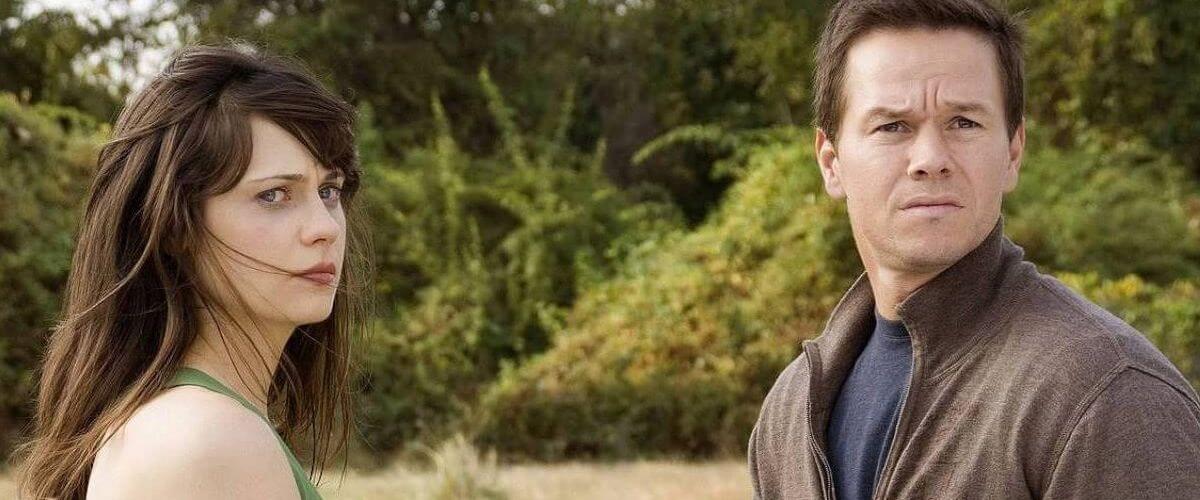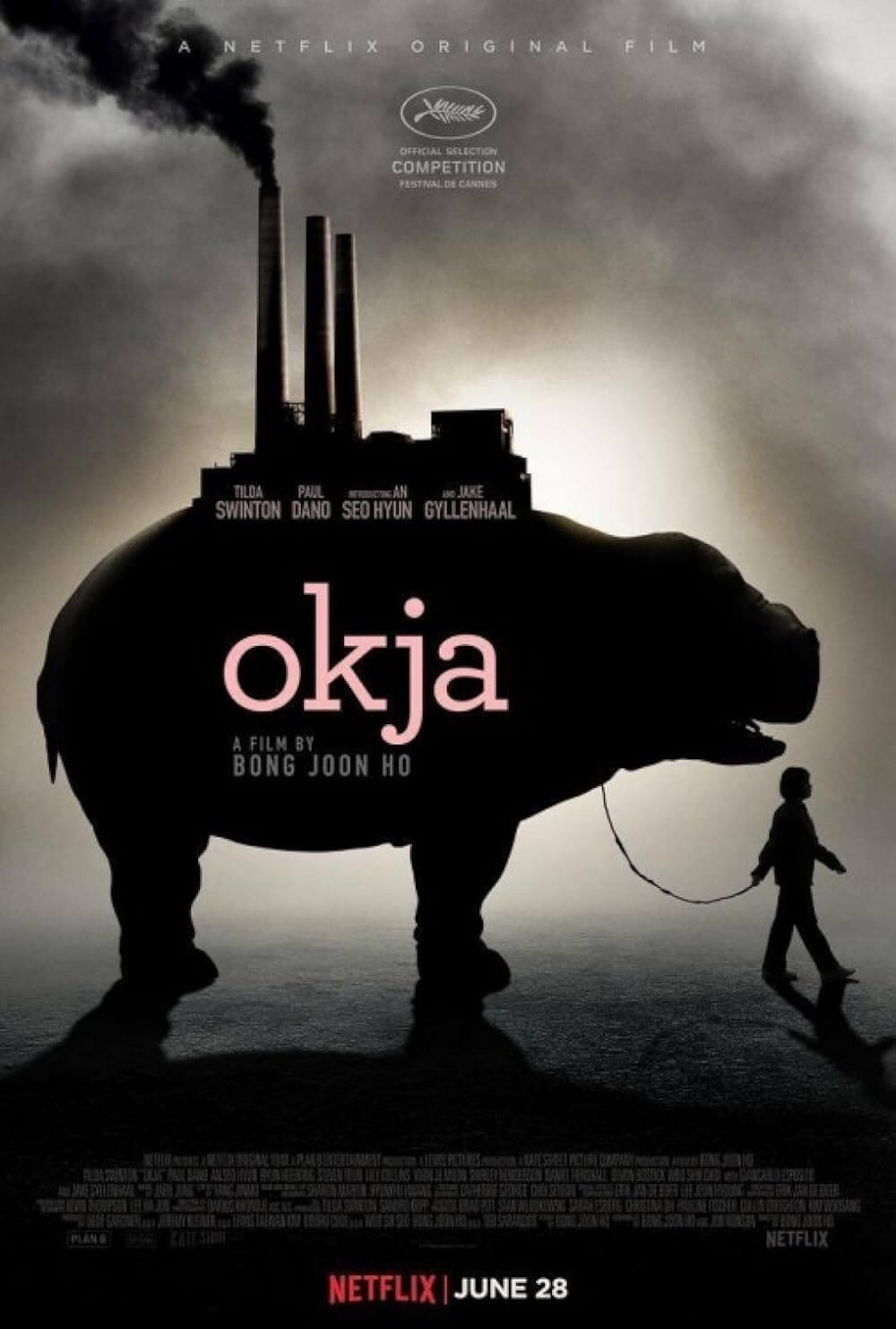
The Happening
By Brian Eggert |
The Happening is the latest from director M. Night Shyamalan. The film is neither exciting nor involving, though it’s being widely advertised as a grisly R-rated thriller—Shyamalan’s first foray into non-PG-13 territory. He rips the concerning disappearance of honey bees straight from the headlines, resolves they were the target of an “unexplained act of Nature,” and considers the possibility that humans might become a similar target. The result is a promising idea realized with a laughable amount of hokum.
Mark Wahlberg stars as high school science teacher Elliot Moore, who scrambles to vacate Philadelphia with his wife Alma (Zooey Deschanel) after a series of baffling “attacks” strike the East Coast. Fellow teacher Julian (John Leguizamo) joins them with his eight-year-old daughter Jess (Ashlyn Sanchez). Feeding on post-9/11 fears, reports claim the source is some kind of terrorist poison that reverses the human self-preservation instinct, causing mass suicides. Construction workers leap from scaffolding; police officers shoot themselves; gardeners run themselves over with lawnmowers.
But when the affected area spreads from cities into rural neighborhoods and along the countryside, terrorism seems less likely. It’s suggested that plants might be releasing a toxin to eliminate their enemies, namely the environment-unfriendly human race. But since the poisons are carried by the wind, Elliot and his group run from gusts of air, making for none-too-thrilling chase sequences that lack a visible pursuer. As silly as running from nothing sounds, the film is stricken with the director’s admirable but failed devotion to his otherwise fascinating idea.
Shyamalan’s overbearing sense of gravity weighs down every scene with overt self-importance, and he fails to make us care in the least, resulting in a false (almost embarrassingly so) significance from scene to scene. And what’s worse than Shyamalan’s seriousness? His sad, pathetically quirky attempts at humor. Take the Nursery Owner (Frank Collison) who gives Elliot and Alma a ride after their train stops in the middle of nowhere; the character is a plant nut also obsessed with hot dogs. Yes, hot dogs. I imagine the character needed some sprucing, and Shyamalan figured Why not hot dogs? Such idiosyncrasies feel desperate and are painfully out of place, generating the undesired at, not with, laughter.
Generally, over-the-top talent is wasted performing in Shyamalan’s standard low-key tone and severity. His characters are so unnaturally frigid and unresponsive that we begin to wonder if he slipped his actors Valium before shooting. Wahlberg is best barking out hostile attacks in The Departed, fanatically discussing unjust politics in I Heart Huckabees, and playing dumb in Boogie Nights and Three Kings. Here he’s trying to sound intelligent, delivering Shyamalan’s awkward dialogue that even Lawrence Olivier couldn’t master, and looking uncomfortable and unbelievable in every scene (except the one where his character calls himself a “douche bag”). Same goes for the usually hyperactive presence of Leguizamo, whose dial is turned down below audible. Deschanel’s role is limited to wide-eyed looks of awe, fear, and happiness, each indistinguishable from one another in her overly discreet performance. Shyamalan’s usually appropriate ominous temperament fails because miscast actors populate the roles.
And now, I must address a particular issue raised by several critics (you know who you are), namely those who would claim Shyamalan mirrors Alfred Hitchcock in style. Perhaps there is a superficial plot likeness between The Happening and Hitchcock’s The Birds, in that a natural, inexplicable phenomenon terrorizes the East Coast. And aside from his Bernard Herrmann-inspired music selections, that’s precisely where the comparisons should end. Shyamalan fails to involve us by his concentration on shock value—creating eerie images, one after another, of victims mindlessly killing themselves. His films are wholly reliant on revelatory twists. These moments are shocking, to be sure, but not necessarily suspenseful. Shyamalan’s suspense resides in the unexpected or the unknown, a surprise. Hitchcock’s approach is best explained in his decisive interview with François Truffaut, where he compares his approach to the placement of a bomb:
“There is a distinct difference between ‘suspense’ and ‘surprise,’ and yet many pictures continually confuse the two. I’ll explain what I mean: We are now having a very innocent little chat. Let’s suppose that there is a bomb underneath this table between us. Nothing happens, and then all of a sudden, ‘Boom!’ There is an explosion. The public is surprised, but prior to this surprise, it has seen an absolutely ordinary scene, of no special consequence. Now, let us take a suspense situation. The bomb is underneath the table and the public knows it, probably because they have seen the anarchist place it there. The public is aware the bomb is going to explode at one o’clock and there is a clock in the decor. The public can see that it is a quarter to one. In these conditions, the same innocuous conversation becomes fascinating because the public is participating in the scene. The audience is longing to warn the characters on the screen: ‘You shouldn’t be talking about such trivial matters. There is a bomb beneath you and it is about to explode!’”
Certainly, there is suspense in knowing that something’s in the air and it’s coming for you. But the onscreen reality of an invisible toxin in the air, prompting characters to run from wind that remains heard and not seen, proves achingly uncinematic. Perhaps a green fog or something visible would have been a preferable alternative.
Since his first success back in 1999 with The Sixth Sense, an overrated ghost movie if there ever was one, we’ve expected surprises and twists from Shyamalan. He seems increasingly bent on dropping plot bombshells that, I think, he’s forgetting about narrative. He forgets that tangible characters drive his most successful pictures, like Signs, whereas plot-driven yarns like The Village and Lady in the Water leave audiences shrugging with indifference. Still, I look forward to each M. Night Shyamalan film, no matter how silly the trailers or how seemingly absurd the plot. At the very least, he will deliver a movie that seems to have control over its formal elements, which in itself is sometimes enough. What Shyamalan has lost in his last several releases is his ability to engage his audience, to write believable characters or dialogue. I hope he finds whatever he’s lost. Some critics praise Shyamalan for his realism and patient storytelling, but I find nothing realistic about The Happening. And that’s not a criticism of his Earth vs. The Earthlings concept, which admittedly is thought-provoking. Rather, I question the authenticity of his forced human interactions, as they lack any semblance of a soul.

Thank You for Supporting Independent Film Criticism
Thank you for visiting Deep Focus Review. If the work on DFR has added something meaningful to your movie watching—whether it’s context, insight, or an introduction to a new movie—please consider supporting it. Your contribution helps keep this site running independently.
There are many ways to help: a one-time donation, joining DFR’s Patreon for access to exclusive writing, or showing your support in other ways. However you choose to support the site, please know that it’s appreciated.
Thank you for reading, and for making this work possible.
Brian Eggert | Critic, Founder
Deep Focus Review






